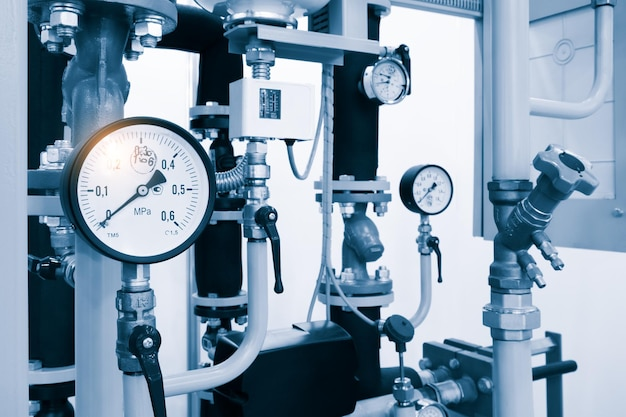Valves are essential in large companies and homes because they work with several pipes to regulate the flow of commodities like oil, gas, water, or pulp. Find which one suits your needs in this article.
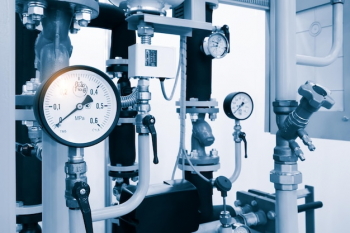
Image Source: Freepik.com
These valves can withstand leaks due to the nature of the material. Brass is less durable than steel and can only operate in a limited range of temperatures. The most acceptable options for high-pressure and temperature conditions are stainless steel valves. They are also excellent materials for resisting corrosion.
Brass vs Stainless steel composition
Brass materials
Brass is a yellow metal made of Copper and zinc. Its primary function is the creation of decorations and musical instruments. It is significant historically and forever due to its toughness and workability.
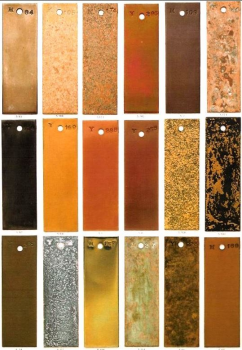
Image Source: Pinterest.com
Types of Brass Alloy
- Admiralty brass
- Prince’s metal
- Aluminum brass
- Common brass
- Gilding metal
- High brass
- Leaded brass
- Rich low brass
- Tonval brass
- White brass
- Yellow brass
How to tell the brass
- Cast brass vs Solid brass
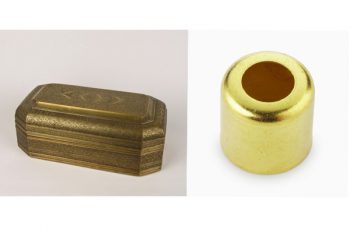
Image Source: Pinterest.com
By eliminating flaws like porosity, blow holes, and cast from the product, solid brass enables manufacturers to make flawless products every time. As the cast is utilized more, there is a loss of detail, resulting in flaws such as the Metal’s porosity, blow holes, and uniformity of finish quality.
- Brass vs Chrome
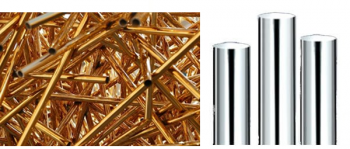
Chrome has a glossy silver metal finish, and brass has a warm yellow-brown tone. Although both are metal-plated, each one’s appearance and color are highly distinct. Brass and Chrome would be electroplated using a plating procedure, even though the end product and color would be different.
Steel materials
It is by far the material that is utilized the most in the construction of the world’s industries and infrastructure, and it is used to create everything from oil tankers to sewing needles. Steel is also used in the construction and manufacturing tools needed to make these items.

Image Source: Freepik.com
Types of Steel
- Carbon steel
- Stainless steel
- Alloy steel
- Tool steel
How to tell stainless steel
- Brushed steel vs Stainless steel While “brushed steel” refers to a particular finishing technique, “stainless steel” refers to the type of alloy used in steel. A stainless steel ball valve might have a brushed steel finish since the process of brushing steel happens after the steel alloys or components have been mixed.
- Stainless steel vs Copper The strain and stress tests reveal that stainless steel performs significantly better than Copper because it is, on average, 2.5 times stronger.
- Zinc alloy vs Stainless steel Zinc, a heavy element, provides improved corrosion resistance, stability, dimensional strength, and impact strength when alloyed with other metals.
- Stainless steel vs Metal Iron has been mixed with other elements to create metal alloys like steel and stainless steel, each of which has unique qualities. Steel and stainless steel differ primarily in their resistance to corrosion; although stainless steel does not experience deterioration, steel does.
- Chrome plated vs Stainless steel Stainless steel is far more robust and will keep its finish for many years, even if Chrome is less expensive and has a better gloss finish.
- Titanium vs Brass Titanium is a specialty metal particularly appealing for corrosion-sensitive equipment across various industries. Brass, on the other hand, is a combination of Copper, zinc, and possibly other metals. In contrast to plastic valves, it can resist corrosion very well due to its nature as a soft metal. Brass valves are the best option for domestic plumbing systems because they can tolerate and absorb more heat than plastic.
Brass vs Stainless steel properties
Choosing the suitable material for your factory or even in your household is a time and effort for a busy and loaded businessman building a new warehouse or a newly married couple building a new home.
Strength
Materials used for pipes and fittings must have enough strength to withstand system pressures and potential overpressures. To control the high-temperature flow, high-pressure steam, for instance, pipes and valves, must be manufactured to very stringent requirements by licensed manufacturers.
Brass
Has a density; 8.49 g/cc, Tensile Strength; 338 – 469 MPa, Tensile Strength; 124 – 310 MPa, Elongation Break; 53%, Modulus of Elasticity; 97 GPa, Bulk Modulus: 140 GPa, Poisson’s Ratio: 0.31, Machinability; 100%, Shear Modulus;37 GPa.
Stainless Steel
A Grade 304 Stainless has a tensile strength of 621 MPa (90 ksi), a maximum use temp of 870˚C (1,679˚F), a melting point of 1,399 – 1,454˚C (2,550 – 2,650˚F), good overall resistance to corrosives.
Hardness
A stricter material is placed in sensitive areas during the metalworking process, known as hard facing. The product with hard materials could be used to make entire components, but that is typically a considerably more expensive option.
Brass
Brass’s maximum hardness has traditionally been used to describe its hardness. According to publication No. 36 by the Copper Development Association (CDA) from the 1960s, cartridge brass is typically 65HV when fully annealed and 175–185HV when fully hard.
Stainless Steel
Tensile Strength, Ultimate ; 505 MPa Tensile Strength, Yield ; 215 MPa @Strain 0.200 % , Elongation at Break; 70 %, Modulus of Elasticity; 193 GPa, Melting Point; 1400 – 1455 °C, Specific Heat Capacity ; 0.500 J/g-°C
Conductivity
A few installation choices are retractable, flow-through, immersion, and direct insertion. Choosing the right electrode or sensor is essential for the best measurement results.
Brass
This class of copper-and-zinc alloys indicates that pure copper conductivity is frequently not necessary for connectors. More copper-30% zinc alloy is stamped and shaped into contacts, terminals, switches, etc., than any other copper alloy.
Stainless Steel
Stainless steel has substantially lower conductivities: at ambient temperature, stainless steel has an electrical conductivity of around 1.4 million siemens per meter and thermal conductivity of roughly 15 watts per kelvin per meter.
Corrosion Resistance
Valves, which are frequently made of Metal, act as a channel for various fluids. As a result, rust on a valve is standard. Regarding corrosion, it is essential to consider the material choice, the corrosion allowance, the working environment, and the effect of fluids.
Brass
Despite having a lower corrosion resistance than other copper alloys, brass still performs admirably under the circumstances seen in underhood applications. Brass oxidizes. Brass-bright chromate: 100 andBrass-heavy chromate: 150.
Stainless Steel
A steel alloy with a minimum 10.5% chromium concentration is known as stainless steel. Stainless steel is remarkably resistant to corrosion and rust because chromium interacts with airborne oxygen to generate a protective layer.
Melting Temperature
Consumers need to know the temperatures at which the valve will operate, the loads or stresses it will experience, and the corrosive environment to which it will be exposed.
Brass
Brass and copper metal goods are classified as metals because of their similar reddish color. It has a melting point of 1700 F (927 C).
Stainless Steel
Depending on the application and environment the alloy must withstand, stainless steel is available in various grades and surface treatments whose melting point is 2750 F (1510 C).
Brass vs Stainless steel: Which is more recommended in manufacturing
Costs
Compared to stainless steel, brass is a significantly more efficient material to machine. This shortens the manufacturing cycle and cuts production costs.
Brass
For applications requiring high-pressure brass, it is a fantastic option. Brass is a sturdy and resilient material that is less expensive than stainless steel.
Stainless steel
There is a higher demand for steel all over the world because of the production of cars, buildings, ships, trains, and even gadgets.
Durability
Ability to tolerate deterioration, stress, or harm
Brass
Being strong and tarnish-resistant, brass has a high degree of durability. Some kinds may even incorporate tin and aluminum to increase resistance and strength.
Stainless steel
Strong and resistant to corrosion in alkaline solutions and chlorine-containing conditions. It can also tolerate extreme heat and temperatures well below freezing.
Weight
It is a term describing the force an acceleration field, particularly the gravitational field of the Earth at the surface, applies to a particle or object.
Brass
Brass weighs 8.4 grams per cubic centimeter or 8 400 kilogram per cubic meter, i.e. density of brass is equal to 8 400 kg/m³.
Stainless steel
The density of stainless steel 300 series is 7.85 grams per cubic centimeter, or 0.289 pounds per cubic inch (501 pounds per cubic inch, imperial).
Brass Stainless steel compatibility: Can brass and stainless steel be used together?
Brass and stainless steel (301, 304, and 310) are only two metals apart, making it possible to link them safely with little chance of galvanic corrosion.
Common uses for brass
Brass is one of the most frequently utilized alloys because of its noteworthy qualities, which I’ll discuss in more depth below. This alloy is used in a seemingly endless number of products and industries due to its versatility.
- Decorative Applications
- Mechanical Applications
- Music Instruments
Everyday use of Stainless steel
Stainless steel has a chromium concentration of at least 10.5% and other elements in smaller amounts. Chromium and oxygen combine to create a passive layer, thin, sealed, fixed-adhering chromic oxide coating.
- Automotive and Transportation
- Medical technology
- Building trade
- Aircraft construction
- Food and the catering industry
- Tanker manufacture
- Vessel manufacture
Standard fittings made in Brass vs Stainless steel
Brass vs Stainless Steel Faucet
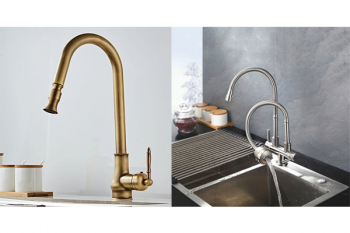
Image Source: Pinterest.com
Stainless steel faucets are simple to install and look fantastic in a modern kitchen. Both are good depending on what you are looking for; less stain and aesthetic, go for the brass faucet, and if you need kitchen grade and clean looking, go for the stainless steel.
Brass vs Stainless steel Jewelry

Image Source: Pinterest.com
They fit at any occasion at hand for their versatility in color and design, lightweight and hypoallergenic, only that it is prone to dents and the reaction to chlorine. While brass jewelry has a beautiful tone and is durable and corrosion-resistant, it is easily tarnished and non-hypoallergenic.
Brass vs Stainless steel Nozzle
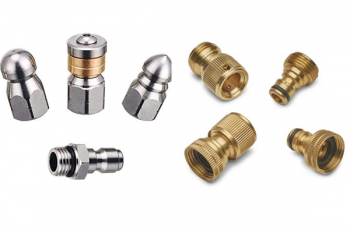
Image Source: Pinterest.com
A nozzle is typically a pipe or tube with a variable cross-sectional area used to control, direct, or alter the flow of a fluid (liquid or gas). Nozzles are widely used to manage the flow rate, speed, direction, mass, form, and pressure stream that emerges from them.
Brass vs Stainless steel Valves
Brass is easier to cast and manufacture than stainless steel because it is tougher and has a higher melting temperature than brass. Brass is used in making instruments, door knobs, locks, and ornaments. While stainless steel is used in making cutlery, car parts and surgical instruments, the top producer of these things is XHVAL since 1986, in Wenzhou, China. They support industries like mining and minerals, pulp and paper, chemicals, oil and gas, and power generation. This brass ball valve manufacturer and stainless steel ball valve supplier offer various industrial valves suitable for pipeline transportation, energy services, and industries. Their proficiency is demonstrated by their ongoing innovation, current certifications, and quick product delivery.
Stainless steel valves
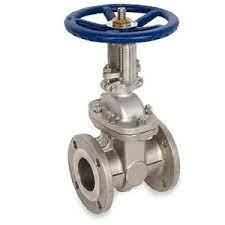
Image Source: XHVAL.com
Stainless steel ball valves are durable and typically have a long-lasting life. It has exceptional qualities like resistance to abrasion and corrosion and the capacity to withstand high pressures and temperatures. It is capable of handling hazardous media applications as well as cryogenic ones. Additionally, this valve requires minimal maintenance due to its endurance.
Brass valves
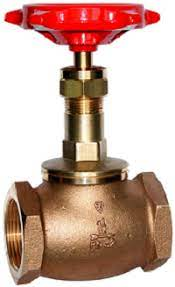
The primary purposes of this ball valve are to start and stop media flow. Through an actuator, it can be controlled manually or automatically. This type of valve is constructed from a copper and zinc alloy. The valve is more flexible as a result. Similar to bronze, brass is very malleable, making it simple to smith or cast. The corrosion resistance of a brass ball valve is likewise extreme. It does not work well with process media with a lot of chlorine.
Steel vs Brass Case
Brass produces a better chamber seal than steel, brass ammunition is typically considered superior to shells with steel cases. There is less blowback into the receiver and chamber. Because it is more pliable than steel, brass performs this sealing function better. It enlarges to suit the chamber’s walls perfectly.
Conclusion
Having a supplier and manufacturer of industrial-grade valves ensures the security of one’s home and business. Through this article, we have also discovered the best product. Go to their website to learn more about XVHVAL’s products and others.

